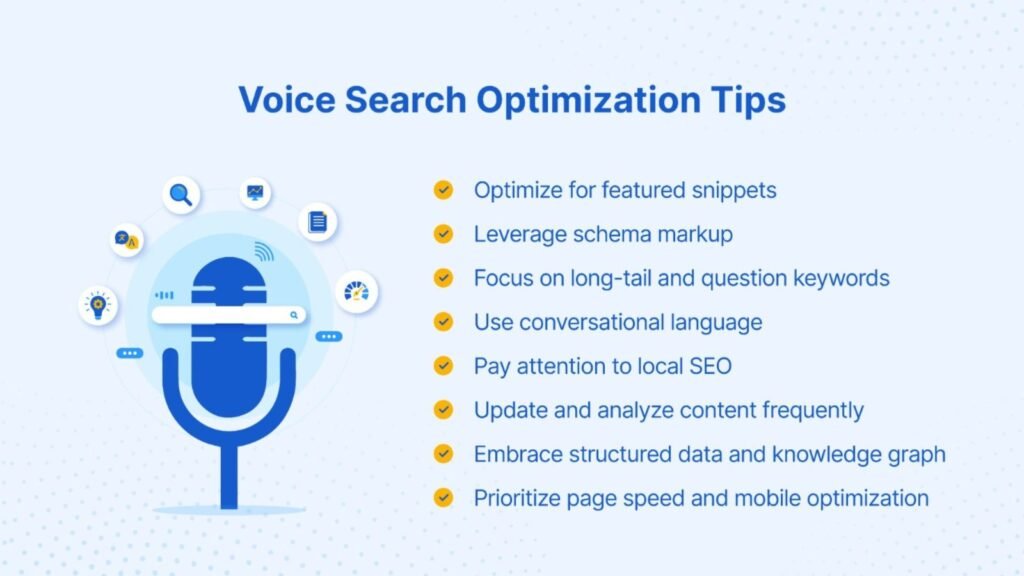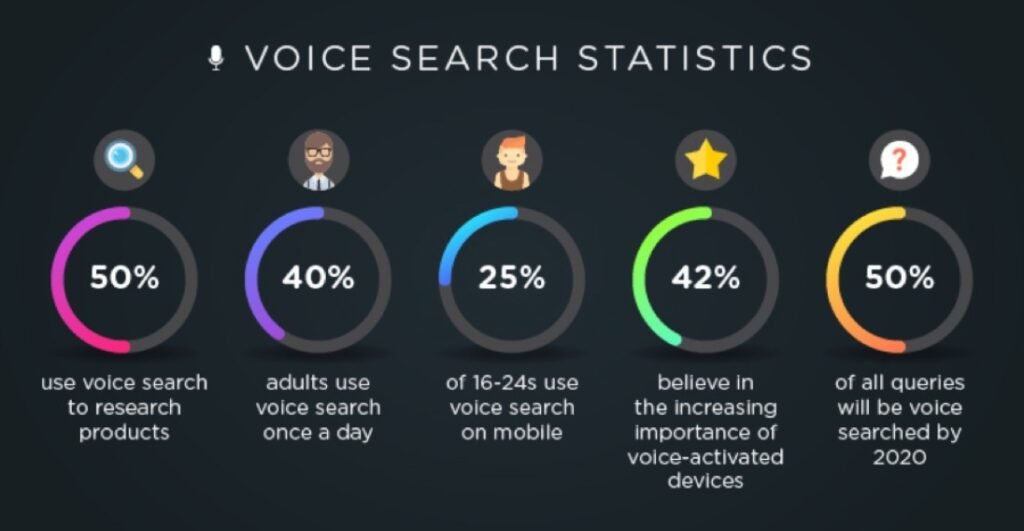What is Voice Search Optimization (VSO)?
Voice Search Optimization (VSO) is the new imperative of digital marketing and SEO as voice-enabled devices dominate the globe, revolutionizing how people interact with search engines. With the rapid adoption of virtual assistants like Amazon Alexa, Google Assistant, and Apple Siri, the way people search has undergone significant change. Unlike traditional keywords, voice search tends to be longer, more conversational, and natural. For instance, instead of typing “best restaurants in New York,” a user might ask, “What are the best Italian restaurants around me?” This evolution presents both opportunities and challenges for businesses aiming to optimize their online presence.

Conversational Tone and Long-Tail Keywords
The most prominent characteristic of voice search is its conversational tone. Users phrase searches as whole questions or commands, closely mimicking natural language. This shift has increased the use of long-tail keywords, which are explicit, multi-word phrases that align more closely with users’ intent.
Businesses can optimize for voice search by creating content that reflects these conversational queries. FAQs are an effective tactic, as they anticipate user questions and provide direct answers. For example, a coffee shop FAQ page might include questions like “Where can I get organic coffee around here?” or “What are your hours of operation for weekends?” Such content is more likely to appear in voice search results, playing a vital role in optimization strategies.
Voice Search Optimization Tips

Local SEO and Voice Search
Most voice searches have local intent, with users seeking nearby businesses, services, or information. Common queries include “restaurants open now” or “gas stations near me.” Businesses can benefit by keeping their Google My Business profiles up-to-date, including accurate contact information, business hours, customer reviews, and local keywords. Building trust and improving visibility in local searches also require positive reviews and consistent local citations.
Importance of Page Speed and Mobile Responsiveness
Page speed and mobile responsiveness are crucial for voice search optimization. Most voice searches occur on mobile devices, so sites that load slowly or provide a poor user experience will not rank well. Algorithms favor mobile-friendly and fast-loading websites, making technical SEO a necessary investment. Techniques like image compression, browser caching, and responsive design improve site performance and user experience. A mobile-friendly, fast website not only caters to voice search users but also boosts overall search rankings.
Featured Snippets and Structured Data
Featured snippets, or “position zero” results, are critical for voice search optimization. Voice assistants often read answers directly from featured snippets, providing users with concise and authoritative responses. For example, if a user asks, “What is the best way to clean a coffee maker?” The assistant may read from a snippet at the top of the search results.

To appear in these snippets, businesses should structure their content to be clear, concise, and well-organized. Using headers, bullet points, and lists helps search engines understand and display information effectively. Additionally, structured data markup like schema.org makes website content more accessible to search engines, increasing the likelihood of being chosen for featured snippets.
User Intent and Keyword Research
Understanding user intent is essential for voice search optimization. Voice queries are often specific and context-dependent. For example, a search for “pizza near me” might mean the user wants nearby restaurants, delivery options, or recipes. Businesses must conduct extensive keyword research to predict the questions their target audience is likely to ask. Tools like Google Keyword Planner, AnswerThePublic, and SEMrush can help identify current trends in voice searches and guide content strategy.
Personalization and Interactivity
Voice assistants are highly personal, often using search history, preferences, and location to tailor responses. Businesses employing personalization can create more relevant connections with their audience. For example, an online store could use dynamic content to recommend products based on purchase history, enhancing the customer experience and increasing conversions.
Challenges of Voice Search Optimization
One major challenge is the limited real estate for voice search results. Unlike traditional search, which provides a list of links, voice search typically delivers a single answer or a small selection of results. This intensifies competition for visibility. To remain competitive, businesses must focus on producing high-quality, authoritative content that directly answers user queries.

Ethics and Transparency
Ethics play a critical role in voice search optimization. Transparency and accuracy are essential for building user trust. Misleading or false information can harm a brand’s reputation and reduce customer loyalty. Businesses should create authentic content supported by reliable data to maintain credibility.
Conclusion
The rise of voice-enabled devices and changing user behavior have shifted SEO practices, emphasizing long-tail keywords, conversational content, local SEO, and technical performance. By leveraging tools like Google My Business, structured data markup, and featured snippets, businesses can achieve higher visibility and engagement. Although challenges like limited result spaces and interpreting user intent exist, the rewards of investing in voice search optimization far outweigh the obstacles.
Voice search will continue to grow, and businesses that embrace this trend will be well-equipped to thrive in a conversational, fast-paced digital world. By staying relevant and addressing user needs effectively, they can secure success in the years to come.

